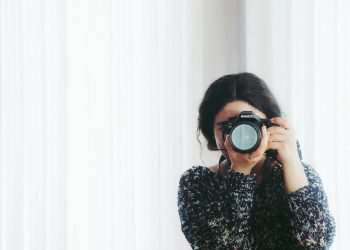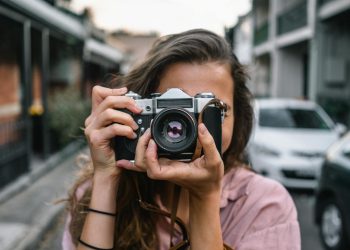Every photograph tells a story, but the most powerful photographic stories rarely happen by accident. They are built with care, focus, and a deliberate creative process. Starting a photography project isn’t just about picking up a camera and snapping away—it’s about connecting an idea to your lens, cultivating a vision, and shaping that vision into something meaningful over time. The question is not just “how do I take better pictures?”—but “how do I create something that lasts, something that speaks?”
Photography projects don’t need to be epic in scale or technical in complexity to be impactful. The heart of a good project lies in its clarity, honesty, and emotional truth. Whether you’re documenting a family tradition, exploring identity, or capturing street scenes in your city, the first step is not technical—it’s personal. It starts with a question: what compels you?
Find Your Why
Before you even lift your camera, ask yourself what you care about deeply. Is there a story you feel is missing in the world? Something you want to remember? A detail about everyday life that others overlook? Starting with a genuine interest will give your project authenticity, and more importantly, sustainability. Passion is the fuel that will keep you going when the light is bad, when your shots miss, or when your creative energy fades.
This stage is less about choosing a subject and more about clarifying your curiosity. For example, if you feel drawn to aging and memory, your project might evolve into a series on your grandparents’ daily life. If you’re fascinated by subcultures, you might document local skateboarders or underground music scenes. Let your personal voice lead.
Start Small, Stay Close
One of the biggest mistakes emerging photographers make is thinking they need to travel far or access exotic locations to create compelling work. Some of the most powerful photo essays ever made have come from someone’s backyard, neighborhood, or even home. Staying close—geographically and emotionally—helps you notice more, dig deeper, and stay committed.
If you’re unsure where to begin, challenge yourself to photograph the same place or person for a week. Don’t aim for perfection; just observe. The repetition forces you to see beyond the obvious. The more you return, the more layers you’ll uncover—and the more your story will grow.
Create a Loose Framework
Once you’ve landed on a theme or subject, it’s helpful to create a loose structure. This doesn’t mean boxing yourself in with rigid goals, but rather defining some gentle boundaries that give your project coherence.
Ask yourself:
What is the core message or feeling I want to communicate?
Will this be a long-term project or a short-term one?
What kinds of images do I want to include—portraits, landscapes, still life, candid moments?
How many photos do I want to finish with?
Having a rough framework helps prevent creative paralysis. Think of it as a map—you might stray from the path now and then, but you’ll always know what direction you’re heading.
Embrace the Process, Not the Outcome
One of the most human parts of any creative endeavor is self-doubt. You will question your abilities, your direction, and the value of what you’re making. This is normal. What matters is learning to embrace that discomfort as part of the process.
Photography, like any art, unfolds over time. Your first shots might not match the vision in your head—and that’s okay. The best projects often begin clumsily and evolve with patience. Don’t rush to edit or share too soon. Let the work breathe. Revisit it with fresh eyes after a week, a month, or even longer. Over time, patterns will emerge that reveal what the project is really about.
Make a Relationship With Your Subject
If your project involves people, building trust is essential. This doesn’t mean conducting formal interviews or sticking a camera in someone’s face. It means showing up, being present, and listening. It means photographing with respect and sensitivity, not as an outsider but as someone genuinely engaged.
The best portraits and documentary images aren’t just visually interesting—they carry a quiet understanding between the photographer and the subject. Whether you’re photographing your sister at home or a street performer you met ten minutes ago, your attitude behind the lens will always be reflected in the photo.
Keep a Visual Journal
Throughout your project, document more than just your photos. Keep a visual or written journal where you record thoughts, challenges, inspirations, and questions. This isn’t just an exercise in reflection—it’s a vital tool for growth. Looking back at your early entries can provide insight into how your perspective has shifted and reveal themes you didn’t even know you were exploring.
You might sketch potential compositions, jot down quotes that resonate, or note interactions that stood out during a shoot. Over time, this journal becomes a parallel story—one that enhances your photographs with a deeper layer of context and emotion.
Edit With Intention
Once you’ve gathered a body of work, the editing process begins. This can be the most difficult and revealing stage of the project. It’s not about choosing your best photos—it’s about choosing the right ones for the story you’re telling.
Ask yourself:
Which images evoke the strongest emotion or narrative?
Are there any photos that repeat the same idea or feeling?
Do I need to include context shots to help guide the viewer?
Is there a natural beginning, middle, and end?
Print your photos if possible. Lay them out on a table or wall and rearrange them. Physically interacting with your work helps create a more visceral connection and sparks new ideas about flow, sequence, and theme.
Think About Presentation
Once you’ve honed your final selection, think about how you want to share it. Will it live in a book, a gallery, a website, or a zine? Each format has its own emotional weight and accessibility. A gallery offers large-scale impact and interaction, while a photo book allows for quiet, intimate engagement.
Don’t rush this part. Consider the story arc, the pacing between images, and the mood you want to leave with your audience. Add titles or captions sparingly—and only when they add value or clarity. Sometimes, letting the images speak for themselves is the most powerful approach.
Accept That It Might Change You
Every honest photography project ends up changing the person who creates it. You’ll walk away with new insights, deeper empathy, and an enhanced understanding of the world—and yourself. You might start out photographing old buildings and end up telling stories of forgotten communities. You might begin with a focus on architecture and realize you’re more drawn to human interaction.
This transformation is the mark of real artistic engagement. It means you were open, vulnerable, and committed. It means you paid attention.











